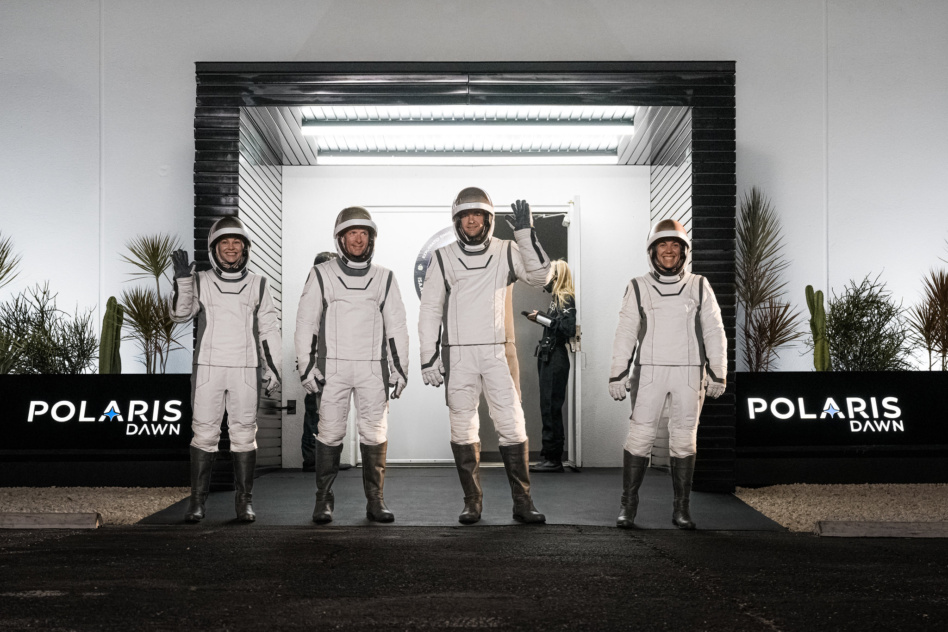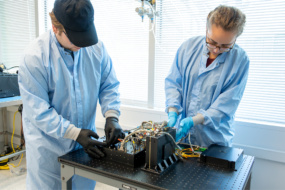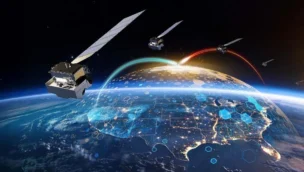Polaris Dawn, the first of three crewed missions purchased by payments from entrepreneur Jared Isaacman, is expected to launch on a SpaceX Dragon at 3:38 am ET tomorrow.
The five-day mission will be the most technically challenging private crewed mission in space, and the first time SpaceX employees have flown to orbit on their own vehicle. Previous crewed Dragon flights have carried passengers to and from the ISS, while the Isaacman-led Inspiration 4 mission orbited the Earth for two days in a free-flying crew Dragon.
This mission has Isaacman, former Air Force pilot Scott Poteet, and SpaceX engineers Anna Menon and Sarah Gillis attempting to accomplish four objectives:
- Ride the Dragon to an orbit 1400 km above the planet, the highest humans have flown since the Apollo missions, to test the vehicle’s and the passengers’ reactions to a high radiation environment.
- Fly down to 700 km above the planet and pop the spacecraft’s hatch so a tethered Isaacman and Gillis can move just outside of the capsule to test SpaceX’s EVA suit on orbit. “We’re going to make use of various mobility aids the SpaceX team engineered, and it’ll look like we’re doing a little bit of a dance,” Isaacman said.
- Tag into the Starlink network with a laser communications terminal, paving the way for improved comms on future missions.
- Perform 36 scientific experiments that will help researchers better understand the human experience in deep space, such as wearing contact lenses to monitor eye pressure in microgravity.
These plans required extensive development of SpaceX’s EVA suit and modifications to the Dragon.
Bespoke tailoring: The suit, based on the outfit worn inside the Dragon during regular flight, has bulked up thermal protection to deal with the extreme conditions of space, redundant oxygen umbilicals, a helmet camera and an internal heads-up display for the astronauts. One last-minute issue was making sure that the suits, which are pressurized with 100% oxygen during EVAs, avoid any static electricity discharge through grounding and modified procedures.
How to train your Dragon: The spacecraft ran through its EVA procedures inside a thermal vacuum chamber—perhaps the riskiest part of this mission will be venting the spacecraft and then re-pressurizing it ahead of deorbit. They also “baked” the spacecraft inside the chamber, allowing its components to release any gasses there instead of during flight.
“The preparations for that risk have been well mitigated,” Isaacman said during a preflight press conference. “We have manual ways to open the hatch, we have a hatch motor to open or close the hatch, we have redundant seals…redundancy with two different nitrogen systems, either one of us, either one should one fail, can get us back up to a habitable environment.”
This mission is the first of three that Isaacman and SpaceX are planning in order to demonstrate various crewed activities, culminating in what is expected to be the first crewed flight aboard Starship.




